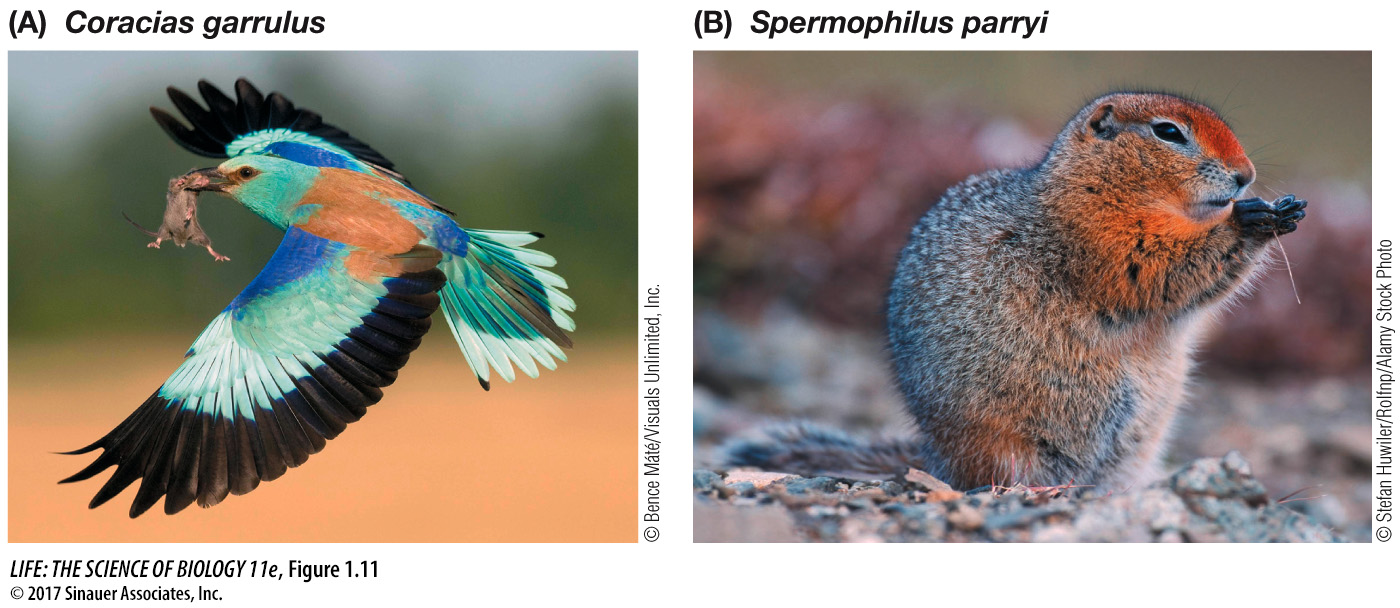Organisms extract energy and raw materials from the environment
Living organisms acquire nutrients from the environment. Biochemical reactions break down complex nutrient molecules into smaller chemical units. Some of those smaller units are used as building blocks for structures the organism requires. The breakdown of nutrient molecules does more than supply raw materials. The breaking of the chemical bonds of nutrient molecules releases energy that the cell transfers to high-energy molecules that it uses to do work.
One kind of work cells do is mechanical—moving molecules from one cellular location to another, moving whole cells or tissues, or even moving the organism itself (Figure 1.11A). The cell also does biochemical work in the building, or synthesis, of new complex molecules and structures from smaller chemical units. For example, we are all familiar with the fact that carbohydrates eaten today may be deposited in the body as fat tomorrow (Figure 1.11B). Still another kind of work is the electrical work that is the essence of information processing in nervous systems.

Figure 1.11 Energy Can Be Used Immediately or Stored (A) Animal cells break down food molecules and use the energy contained in the chemical bonds of those molecules to do mechanical work, such as running, flying, and jumping. This image is a European roller flying with mammal prey in its bill. (B) The cells of this Arctic ground squirrel have broken down the complex carbohydrates in the plants it consumed and converted those molecules into fats. The fats are stored in the animal’s body to provide an energy supply for the cold months.
The many biochemical reactions that take place in cells are integrally linked in that the products of one reaction are the raw materials of the next. These complex networks of reactions must be integrated and precisely controlled; when they are not, the result is malfunction and disease.
Media Clip 1.1 Leaping Lemurs
